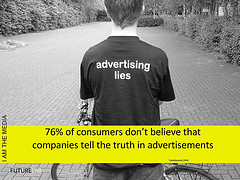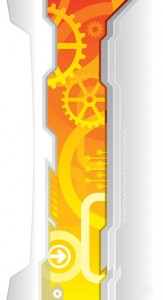 Two years ago the Danish government published a set of guidelines on green advertising claims. It said
Two years ago the Danish government published a set of guidelines on green advertising claims. It said
Environmental or ethical claims in marketing should .. be correct and precise and exaggerations as to the company’s or the product’s ethical qualities or positive effects should be prohibited
Now the US too has issued tighter guidelines.
This month the Federal Trade Commission reissued its Green Guides for the first time since 1998. These lay out the standards expected to be followed by advertisers in the US and go into far greater depth than the Danish guidelines.
Furthermore websites are mentioned specifically in a number of places in the guidelines as examples, so it is clear that these guidelines apply to online marketing as well as any other form.
Businesses from other countries therefore need to be acutely aware that their websites may fall foul of these much tighter guidelines, especially if they’re targeting the US market.
So without further ado, here’s a brief run down of the new rules:
General environmental claims
Overbroad and unqualified claims should be avoided because they can never be fully unsubstantiated. This effectively puts paid to green, sustainable and eco friendly marketing tags.
Where a general claim is specific and qualified the consumer will expect it to be of significant value. Businesses should not therefore highlight insignificant benefits in this way.
Furthermore, marketers need to analyse the trade off between the benefits of the claim they are making and the costs of using that product. If the cost of use is significantly higher than the benefit claimed then the advertising could be considered to be deceptive.
Carbon Offsets
Carbon offset claims need to be backed up with credible carbon accounting methods and one offset cannot be claimed multiple times. Offsets which won’t occur for over two years should be highlighted and carbon offset claims cannot be made if the activity is already required to use carbon offsets by law.
Certification
Product certification by an independent body (eg. Energy Star, Fairtrade, etc) can be taken as an endorsement by the consumer. The FTC’s endorsement guidelines therefore apply.
This means: any material links between the business and the certifier need to be declared; the business needs to be able to substantiate all implicit and explicit claims made by the certification; businesses need to be transparent about which parts of the certification apply to them; businesses need to be specific about what benefits the certification represents if this is not obvious from the certification itself.
Comparative Reduction
Where a product is said to generate lower or less waste, packaging, toxicity etc then the comparison needs to contain what it is being compared to. eg. “30% less waste than our previous product”.
Composting and Bio-Degradation
Where a product claims to be compostable the business needs to have reliable information about all the materials the product will be broken down into. Items which cannot be composted at home need to have this highlighted and if municipal composting facilities for such items are rare then the claim needs to be qualified.
A product may only make an unqualified claim that it is bio-degradable if it will break down fully within one year. Items destined for landfill, incineration and recycling may not make bio-degradable claims.
Free from claims
These claims can only be made if the product contains only trace or less amounts of the substance claimed and if the substance wasn’t added to the product intentionally.
Furthermore, if the substance has been replaced by another which is equally harmful of if the substance was never associated with that product originally then the claim could be considered deceptive.
Non Toxic and Ozone Safe
If a product makes a claim to be non-toxic then there has to be full data to show that it is not harmful to people or the environment.
Ozone safe claims are considered to be misleading. Period.
Recyclable and Recycled Content
An unqualified recyclable claim can only be made if the recycling facilities required are available to over 60 percent of the consumers and communities to which the product is sold. The language of qualification should reflect the scarcity of the recycling facilities.
Recycled content is defined as anything which has been deliberately diverted from the waste stream. Where not all the product is made from recycled content a qualifying percentage or statement should be made. Reconditioned and remanufactured products should carry a prominent recycled content claim to avoid confusion with brand new items.
Refillable
A product can only claim to be refillable if the manufacturer also provides the facilities to refill it.
Renewable Energy
Unqualified claims that a product is made with renewable energy need to be backed up with renewable energy certificates and all virtually all parts of the manufacturing process need to have been conducted using renewable energy. To avoid confusion it is preferable than manufacturers specify the type of renewable energy (wind, solar etc).
Furthermore those who generate their own renewable energy but sell renewable energy certificates cannot claim to “use” or “host” renewable energy as part of their manufacturing process.
Renewable Materials
This can easily be confused with recycled materials so manufacturers should identify the renewable material clearly. They should also identify the proportion of the product made with renewable materials unless it is 100 percent.
The full Green Guides are available in PDF format from the FTC website. They’re 36 pages long and contain numerous examples.
There’s also a great commentary on the new guidelines by Jacquelyn Ottman over on EcoBusiness: Let’s stop calling green products “green”.
Picture Credits: Sarah by Evonne under CC Attribution License / Advertising Lies by Jeff NcNeill under CC Attribution Share Alike License.
A former CTO, Chris has a broad and varied background. He’s been involved with blue chips, consultancies & SMEs across a wide variety of sectors and has worked in Europe, the Middle East and Australia.
In 2007 he decided to combine his knowledge of business and IT with his passion for all things sustainable and has been busy writing ever since. However, his greatest ambition remains to brew the perfect cup of coffee.



